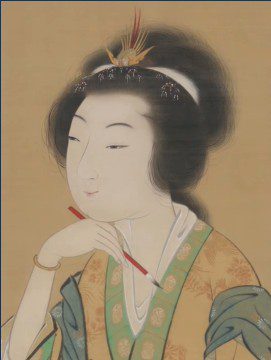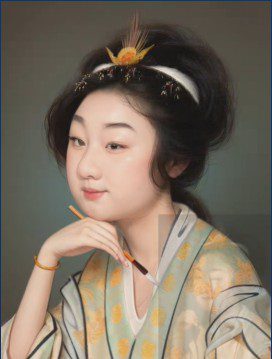Recently, a video on TikTok captured attention for its use of AI technology to recreate the likeness of Yang Guifei, one of the most renowned figures in Chinese history. The results left many viewers astonished due to the stunning beauty and lifelike portrayal of the legendary beauty, which starkly contrasts with the typical depictions seen in films.

Previously, recreating images from historical documents or artifacts posed significant challenges. However, with advancements in artificial intelligence, AI tools can now vividly recreate the likenesses of historical figures in a more realistic and lifelike manner.
In the shared video, AI technology reconstructed Yang Guifei’s facial features based on historical data and descriptions from literature. The outcome presents a woman with a round face, delicate features, and a captivating expression that radiates beauty and charm.
Many internet users expressed their surprise and fascination with this image. Some comments suggested that compared to the typical portrayals in films, the AI version evokes a more authentic and intimate feeling.

This isn’t the first time AI has been used to recreate the likeness of historical figures. Previously, many artistic interpretations have recreated images of famous personalities like Sun Tzu, Cleopatra, and Napoleon, garnering significant interest from the online community.
Utilizing AI in historical recreations not only helps us visualize the past more clearly but also opens up various opportunities in research and education. However, it’s essential to note that while AI can generate lifelike images, the accuracy still depends on the quality and reliability of the source materials used.
You can watch the video recreating Yang Guifei’s likeness here:
This iconic name originates from a moment when Yang Guifei strolled through a floral garden, reminiscing about her hometown. Gazing at the blooming flowers, particularly the fragrant magnolias, she couldn’t help but feel forlorn about her confinement in the imperial palace. In a poignant moment, she lamented: “Oh flowers! Every year, I age, yet when will I be free again?” As her hand brushed the petals, the leaves crinkled, evoking the essence of a magnolia flower. A court maid recounted this story, and from then on, the tale of “Flower Consort” became widely circulated throughout the palace.

In the Tang Dynasty, the beauty of Yang Guifei was elevated to legendary status, described as being exceptionally elegant and graceful. According to historical records, Yang Guifei stood about 1.64 meters tall and weighed approximately 68 kg, with a round face and a captivating demeanor. Despite her voluptuous figure, she was entirely in line with the beauty standards of her time and was seen as a symbol of allure.
The allure of Yang Guifei has been celebrated in poetry across many eras. The poet Li Bai even dedicated three poems entitled “The Song of the Beauty” to praise her enchanting beauty, elevating her image beyond the confines of historical records into the depths of cultural and artistic significance in Chinese heritage.
In the annals of Chinese history, the love story between Yang Guifei and Emperor Xuanzong of Tang is particularly well-known, becoming a subject of inspiration for poetry, theater, and cinema. However, when adapted into films, filmmakers often embellish many elements of their narrative to amplify dramatic effect, sometimes leading to portrayals that stray far from historical accuracy.

Before becoming a consort, Yang Guifei was the daughter of the Minister of War, Li Mao, the son of Emperor Xuanzong. However, after their first meeting, the emperor became enamored with her, and through the influence of the powerful court official, Gao Lishi, Yang Guifei was brought into the palace and elevated to the status of Consort.
The passionate love that Emperor Xuanzong had for Yang Guifei is often cited as one of the reasons that led to the decline of the Tang Dynasty. The emperor, captivated by her beauty, indulged in lavish spending, neglecting state affairs, and causing political instability within the court. This ultimately led to significant turmoil during the latter part of his reign.





















